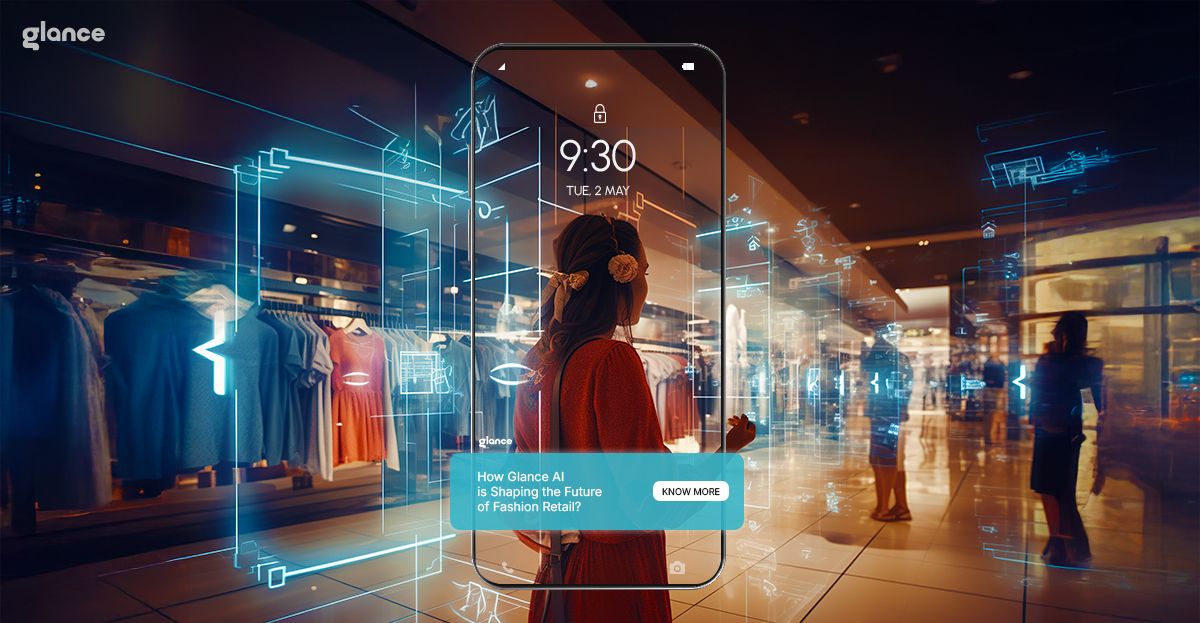Save More, Style Better: Best Low Price Shopping Apps India
How Glance AI is Shaping the Future of Fashion Retail?


Have you ever felt fashion retail whether Online or offline, feels transactional, cold, and outdated? There’s little joy in scrolling through endless product pages. Stores feel overwhelming or irrelevant. Personalization? Usually just cookie-cutter “You may also like…” sections.
But the world has changed—and so have shoppers.
They want inspiration, not inventory. They want outfits, not options. They want to see themselves in the style story.
This is where Glance AI fashion retail emerges—not as a band-aid solution, but as a bold rethinking of what shopping should feel like. It blends Generative AI, personalization at scale, and visual discovery into a seamless retail experience.
No clicks. No queues. Just your reflection, dressed better than yesterday.
From Products to Personalities: Retail’s Shift Toward You

Old-school retail was about inventory. Who had the most styles? Who discounted the fastest? But the modern shopper doesn’t want more—they want better. They want fashion that feels personal, expressive, even predictive.
Glance AI flips the script.
It doesn’t throw products at you. It builds a digital version of you—a personalized avatar—and generates editorial-style fashion looks based on your body type, skin tone, and style preferences. These aren’t stock photos. They’re avatars that look like you, styled by AI, refreshed every single day.
This means Glance AI is not just showing you what’s trending—it’s making trends relatable to you.
- Want to explore streetwear? Swipe.
- Curious about ethnic fusion? Your lock screen has it.
- Not sure what your style is? Glance AI learns with you.
This kind of retail personalization isn’t an add-on—it’s the new foundation. And Glance AI is one of the first platforms executing it natively.
Goodbye Search Bar. Hello Lock Screen Fashion.
You know the typical shopping drill:
Search → scroll → filter → scroll → maybe buy.
It’s long. It’s cold. And it hasn’t changed in 15 years.
Glance AI fashion retail breaks this cycle by doing something deceptively simple: it puts fashion discovery on your lock screen and at a single app, where an AI-styled outfit is waiting for you.
Why is this powerful? Because it turns passive phone time into fashion discovery moments. And because it doesn’t demand your attention—it earns it.
With every swipe, you get:
- New outfits
- Realistic styling (on your avatar)
- “Shop Similar” links to instantly buy products from trusted partners
This is what we call ambient commerce—shopping that doesn’t interrupt your day, but flows with it.
It’s not just mobile-first. It’s mindset-first. And that’s exactly what modern retail needs.
Personalization Without Being Intrusive
One of the biggest turn-offs in digital shopping is how intrusive personalization can feel. Suddenly, your feed is full of shoes you googled once—or worse, items you just talked about near your phone.
Glance AI does personalization differently.
It’s transparent, consent-based, and appearance-first.
You upload a selfie. Share basic styling preferences (body type, hair texture, skin tone). That’s it. The system generates your avatar and starts serving fashion looks that match.
As you interact—save looks, refresh styles, skip certain pieces—Glance AI starts learning. Not in a manipulative way, but in a subtle, stylist-like way. It remembers that you prefer pastels. It notices you save ethnic wear more than denim. And it adapts.
This is personalization you can see and trust—with no cookies, no retargeting, no digital stalking. Just relevant, beautiful fashion that fits you better with every glance.
Inclusivity at Scale: The True Power of AI in Fashion
Most ecommerce sites still model clothes on a narrow range of bodies. That’s not just outdated—it’s alienating. Shoppers want to see how clothes might look on them, not on a size-zero mannequin with perfect lighting.
Glance AI addresses this by creating inclusive avatars that reflect real users:
- Tall, short, curvy, athletic—any body type
- All skin tones, hair types, and style identities
- Gender-fluid and culturally diverse representation
And it’s not just about checking the inclusivity box. It’s about making people feel seen.
When users see an outfit generated for their exact profile, they feel a connection—an emotional click that no product grid can replicate. That’s how Glance AI builds loyalty, trust, and joy. At scale.
This isn’t just fashion tech. It’s retail therapy that actually works.
How Glance AI Benefits Retailers & Brands
Let’s not forget: this isn’t just great for users. Glance AI is a dream for retailers, too.
Traditional ecommerce platforms are crowded, expensive, and click-dependent. Brands fight for visibility, pay for traffic, and often lose the user’s attention halfway through the funnel.
But Glance AI offers:
- Pre-qualified discovery: Users are shown relevant looks tailored to their preferences
- Integrated commerce: One tap from avatar to shoppable product
- Engagement data: Retailers can see what styles are resonating by persona, not just SKU
Plus, since Glance AI is built into the lock screen (and soon a standalone app), it owns the most valuable real estate in mobile. No banner ad can compete with that.
In short, Glance AI doesn’t just reshape retail UX. It reshapes retail economics.
What’s Next for Glance AI in Fashion Retail?
We’re still in early days—and already the product feels futuristic. But the Glance AI roadmap goes even deeper:
- Virtual Try-On (Coming Soon): Users will be able to try looks on their avatar before shopping—bridging the online/offline gap like never before.
- Occasion-Based Styling: Planning for a wedding, interview, or beach vacation? Expect curated looks for specific life moments.
- User-Generated Avatars + Social Shopping: Soon, Glance AI users might share outfits, swap ideas, or join style challenges using their digital selves.
As these features roll out, Glance AI will evolve from a discovery tool into a social shopping lifestyle ecosystem—personal, visual, and emotionally intelligent.
Wrap Up
Glance AI is live—on the Motorola E60, right now.
And with the Glance AI app launching May 22, millions more users will soon experience what effortless fashion feels like.
Glance AI isn’t about replacing stylists or brands. It’s about enhancing choice, confidence, and connection. It’s about reminding people that fashion isn’t about what you buy—it’s about how it makes you feel. Seen. Styled. Expressed.
That’s the Glance AI effect.
And it’s only just begun.
FAQs
1. What is Glance AI fashion retail?
Glance AI fashion retail refers to Glance’s AI-powered approach to shopping, where users receive personalized, daily outfit suggestions directly on their lock screen, based on their appearance and preferences.
2. How does Glance AI personalize fashion looks?
It uses your uploaded selfie, body type, skin tone, and hair data to generate a digital avatar and then creates stylized outfits that match your unique profile.
3. Does Glance AI work for men’s and women’s fashion?
Yes. Glance AI supports styling for all genders and offers fashion inspiration across different categories and style identities.
4. Is Glance AI suitable for all body types?
Absolutely. The avatar system is designed to reflect diverse body types, tones, and hair textures—ensuring inclusivity and relatability.
5. How does Glance AI support fashion brands?
Brands benefit from personalized engagement, higher product relevance, better targeting, and access to real-time behavioral fashion data.







